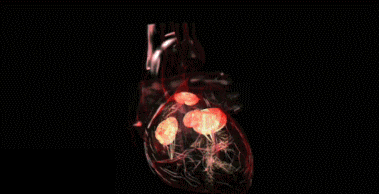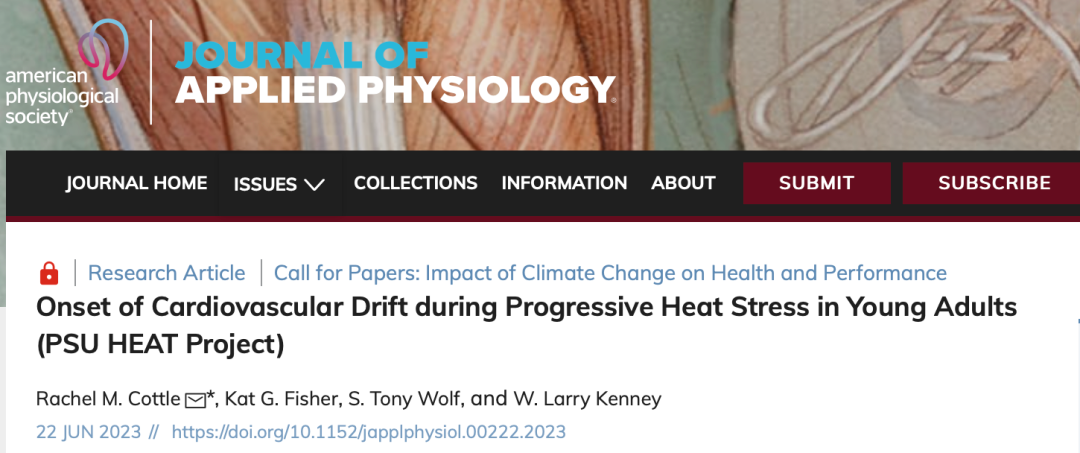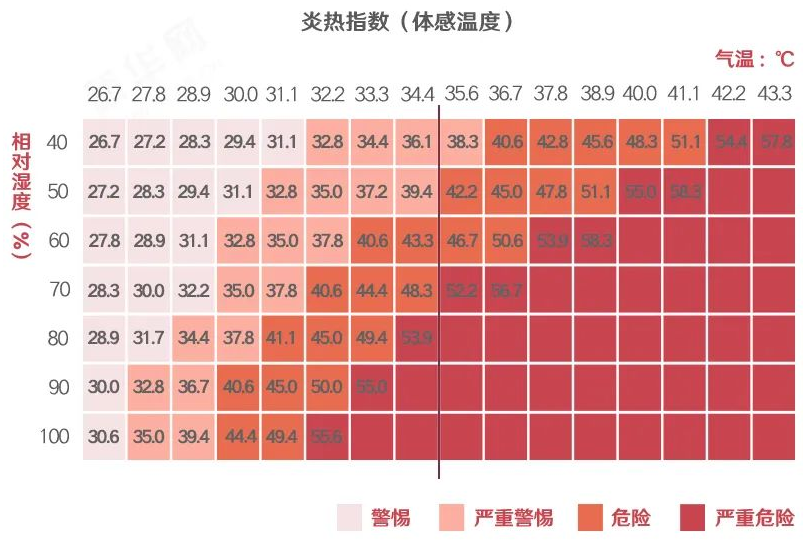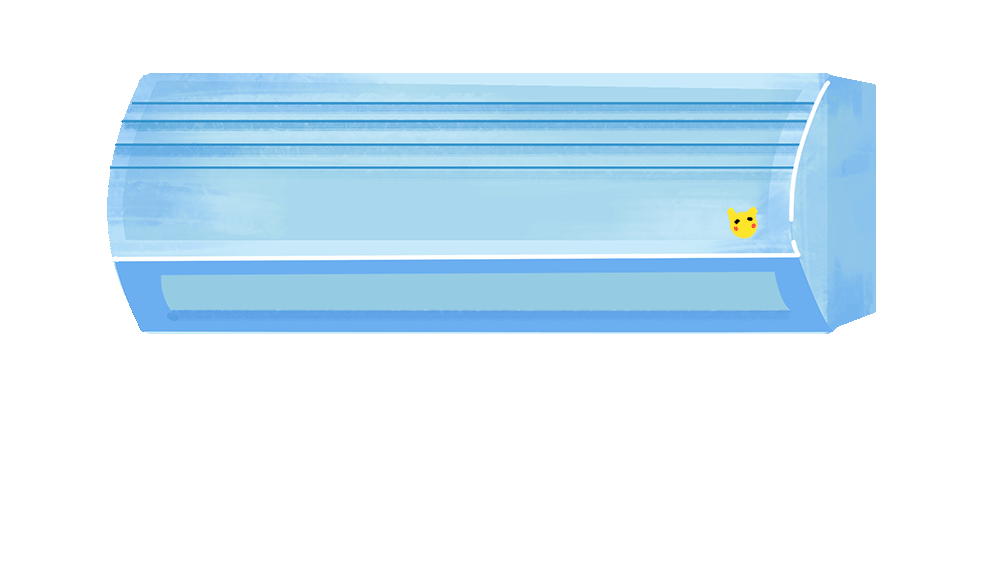
With the arrival of the hot summer days, various regions across the country are entering a “sauna” and “baking” mode. During this period, high temperatures and humidity make people feel as if they are in a steamer every day. In addition to the discomfort of feeling “melted” by the heat, the oppressive weather can also deliver a “blow” to the cardiovascular system. A recent study published in the Journal of Applied Physiology in the United States warns that damp heat exceeding 34°C increases the burden on the heart. The Life Times (search “LT0385” on WeChat to follow) combines research and expert interviews to tell you how to avoid being “steamed” by the sauna-like weather.
The Life Times (search “LT0385” on WeChat to follow) combines research and expert interviews to tell you how to avoid being “steamed” by the sauna-like weather.
Interviewed Expert
Dr. Yang Jingang, Deputy Chief Physician of Cardiology at Fuwai Hospital, Chinese Academy of Medical Sciences
Damp heat exceeding 34°C makes the heart “tense”
A research team from Pennsylvania State University found that in humid conditions, even at a temperature of 34°C, a person’s heart rate steadily increases. This indicates that the exacerbation of cardiovascular load is also one of the signals of the heart “struggling” in extreme high-temperature weather. The researchers invited 51 young, healthy participants to engage in low-intensity physical activities in a controlled environment chamber. To determine the temperature/humidity threshold that triggers heart risks, the temperature and humidity in the chamber were increased every 5 minutes. Meanwhile, the researchers monitored all participants’ core body temperature (i.e., the temperature of internal organs) and heart rate.
The researchers invited 51 young, healthy participants to engage in low-intensity physical activities in a controlled environment chamber. To determine the temperature/humidity threshold that triggers heart risks, the temperature and humidity in the chamber were increased every 5 minutes. Meanwhile, the researchers monitored all participants’ core body temperature (i.e., the temperature of internal organs) and heart rate.
The results showed that prolonged exposure to a hot and humid environment caused participants’ heart rates to continuously increase. Notably, in a humid environment, a temperature of only 34°C can increase cardiovascular load; however, in dry air, this critical value rises to 41°C.
Furthermore, the study found that high temperatures began to attack the cardiovascular system before the core body temperature increased, causing the heart to become “tense.”
Under the same temperature, damp heat is harder to endure than dry heat
Humans are warm-blooded animals and can regulate their body temperature. When the air temperature exceeds body temperature, heat can be dissipated through sweating. However, when both the air temperature and humidity are too high, the efficiency of heat dissipation through sweating decreases. Meteorologists generally use the “wet bulb temperature” to characterize the impact of temperature changes on the human body, which refers to the lowest temperature that air can reach through water evaporation. It is generally believed that when the wet bulb temperature reaches above 30°C, people will feel suffocated by the damp heat; at 35°C, individuals may experience metabolic disorders due to an inability to sweat, leading to illness or even death.The heat index from the National Oceanic and Atmospheric Administration (NOAA) indicates that when the temperature exceeds a certain value, the higher the relative humidity at the same temperature, the more pronounced the increase in perceived temperature.
When the temperature exceeds 34°C and the relative humidity reaches 50%, the perceived temperature can reach 39.4°C; the perceived temperature will also rise with increasing humidity, reaching as high as 53.9°C when the relative humidity exceeds 80%.
High temperature and high humidity bring multiple impacts on the body
High temperature and high humidity are a pair of summer “double troubles”. Under their mutual influence, blood vessels throughout the body dilate, leading to excessive sweating and even dehydration.
!
Affecting Sleep
Humid and hot weather makes it difficult for people to sleep, and with longer days and shorter nights in summer, sleep deprivation can increase average blood pressure and heart rate, adding stress to the cardiovascular system.
!
Causing Heat Stroke
Directly affects the body’s heat dissipation function, leading to heat stroke among outdoor workers. Prolonged high temperatures can also make people irritable, and in severe cases, can lead to “emotional heat stroke,” resulting in loss of control and conflicts with others.
!
Loss of Electrolytes in the Body
High temperature and high humidity weather increase sweating, which may lead to the loss of electrolytes such as potassium and sodium, resulting in hypokalemia/hyponatremia. Humid and stagnant air can breed bacteria, and the increased allergens in the air can exacerbate respiratory diseases and allergies.
!
Inducing Myocardial Infarction
High temperatures accumulate in the body, stimulating the sympathetic nervous system and increasing heart rate; high humidity causes chest tightness and shortness of breath. These changes in the body may lead to increased blood viscosity, decreased blood oxygen levels, accelerated heart rate, and increased myocardial oxygen consumption, thereby increasing the workload on the heart, leading to myocardial ischemia, heart failure, or even myocardial infarction.
How to Avoid Being “Steamed” by Sauna-like Weather?
In the oppressive and steamy weather, how can we get through it safely? Nourishing the body from the inside out is the best way to cool off.
Use Air Conditioning in Dehumidification Mode
When feeling hot and uncomfortable, it is essential to turn on the air conditioning promptly, especially for the elderly and children, and ensure it is clean before use. Once the room temperature drops to a comfortable range, switch from “cooling” mode to “dehumidification” to reduce indoor humidity. Be mindful of proper ventilation and avoid running it all night.

Pay Attention to Indoor-Outdoor Temperature Differences
The temperature difference between indoors and outdoors should not be too large; setting the air conditioning to around 26°C is more comfortable, especially for the elderly with a history of cerebral infarction or hypertension.
Choose the Right Clothes and Protect from Sun
Wear light, light-colored, cotton, and breathable clothing. If going outside, wear a sun hat and sunglasses, and apply sunscreen before going out, reapplying every two hours while outdoors.
Hydrate in Small Amounts Frequently
Be sure to replenish fluids, avoiding cold water or iced drinks. Eating potassium-rich foods such as spinach, bananas, and sweet potatoes is advisable. After excessive sweating, additional salt and minerals may be needed.
Drink Cooling Porridge
Reduce the intake of raw and cold foods, and it is recommended to drink porridge on sauna days. Lotus leaf mung bean porridge, coix seed red bean porridge, and loofah rice porridge are beneficial for cooling and eliminating dampness.
Exercise According to Ability
High temperatures and humidity are not conducive to sweating, so it is advisable to reduce intense exercise and schedule workouts for cool mornings or evenings, preferably in well-ventilated indoor spaces.
Keep Your Mood Cool
A calm mood can lower sympathetic nervous tension, which in turn reduces blood pressure, heart rate, metabolism, and body temperature. When feeling irritable, clapping hands and stomping feet can help relieve anger. ▲This issue’s editor: Zhao ZiyingClick the bottom right cornerto see“See”and then leave👇 Copyright Notice: This article is original to the “Life Times” (WeChat ID: LT0385) and may not be reproduced without authorization. Feel free to share with friends.We do not spread rumors or sensational headlines.We do not exist solely for the sake of shares.Please believe in the power of originality.On the road to health, we are willing to walk seriously with you.
Copyright Notice: This article is original to the “Life Times” (WeChat ID: LT0385) and may not be reproduced without authorization. Feel free to share with friends.We do not spread rumors or sensational headlines.We do not exist solely for the sake of shares.Please believe in the power of originality.On the road to health, we are willing to walk seriously with you.
Supervised by People’s Daily, organized by Global Times
WeChat ID: LT0385 For inquiriesReprint inquiries: 010-65363791Business cooperation: 010-65363765
For inquiriesReprint inquiries: 010-65363791Business cooperation: 010-65363765
If you like it, please click “See”“See”

